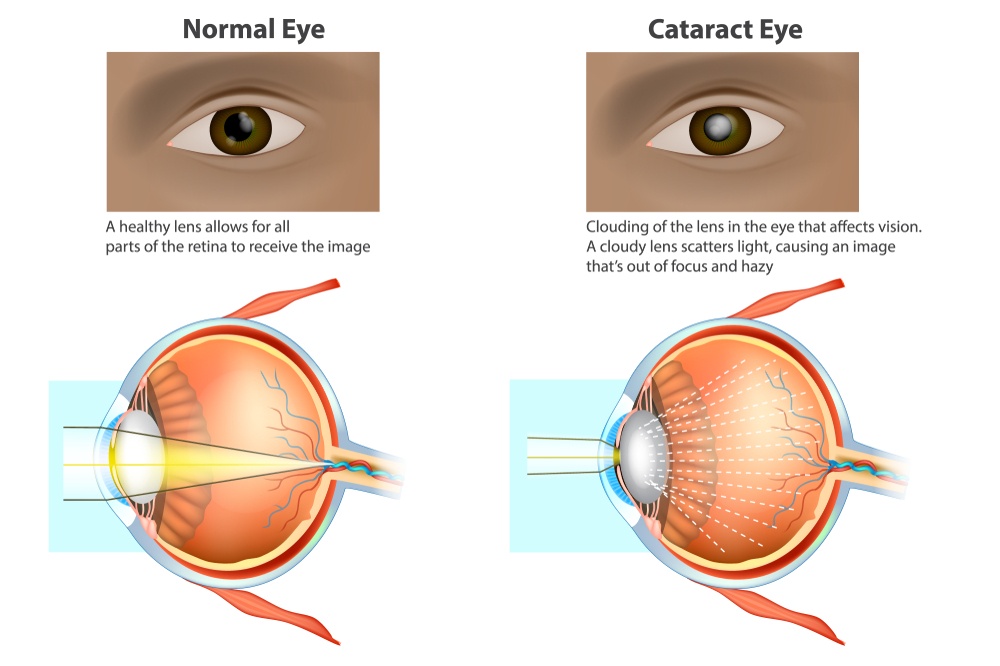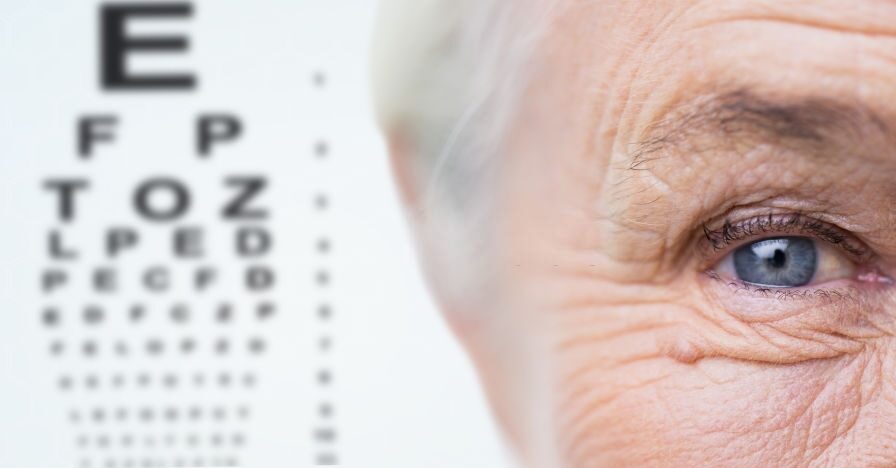Cataract Care
Prizma Cataract Care
About Cataract
Cataract is the clouding of the eye’s natural lens.
The lens inside the eye is like a camera lens, focusing light onto the
retina for clear vision. It adjusts the eye’s focus allowing us to view things clearly, both close and far away.
The human eye lens is mostly made of water and protein. This
protein is arranged in a precise way to allow light to pass through it adequately. But as we age, some of the protein may clump together and this starts to cloud a small area of the lens. This is known as cataract. Over a period of time, it may grow larger and cloud the lens, making it harder to see.

Cataract is one of the most common causes of vision loss in people above 50 years of age and a main cause for blindness in the world. By age 60, more than half of all Indian patients have either developed a cataract or have had cataract surgery. A cataract may occur in one or both eyes. It can not spread from one eye to the other.
At Prizma eye care hospital, we have been treating Cataract patients successfully for years. We offer one of the most advanced technology for painless Cataract surgery in India.
THE CAUSES OF CATARACTS
- ● Ultraviolet radiation from sunlight and other sources
- ● Diabetes
- ● Hypertension
- ● Obesity
- ● Smoking
- ● Prolonged use of corticosteroid medications
- ● Statin medicines used to reduce cholesterol
- ● Previous eye injury or inflammation
- ● Previous eye surgery
- ● Hormone replacement therapy
- ● Significant alcohol consumption
- ● High myopia
- ● Family history

SYMPTOMS
Generally cataracts occur slowly and form few signs until they noticeably block light. Some of symptoms may include :
- ● Cloudy, foggy, filmy or blurry vision
- ● Color seem faded or altered
- ● Progressive nearsightedness in older people is often called “second sight” as they may no longer need reading glasses
- ● Problems during driving at night such as glare from oncoming headlights
- ● Problems with glare (sensitivity to bright lamps or sun)
- ● Double vision (like a superimposed image)
- ● Rapid changes in glasses prescription
TREATMENT
To a certain level, cataract affected vision can be corrected with prescription eye-glasses including contacts or bifocals. However, beyond a certain point prescription glasses may be ineffective and surgical options have to be considered. In a cataract surgery, the patients’ cloudy lens is removed and replaced with a transparent IntraOcular Lens (IOL) to restore good quality vision. Today, cataract surgery is one of the fastest, safest and the most accurate surgical procedures. One of the well-known cataract Surgeries is Phacoemulsification (also called as key-hole surgery). This surgery is done with the help of a machine known as Phaco machine, to remove the cloudy lens and replace it with a clear artificial lens called as IntraOcular Lens (IOL). MicroIncisional Cataract Surgery (MICS) is another well-known cataract surgery. In this surgery, a phaco machine is used to send a probe through a 1.8 mm incision in the cornea and remove the cataract.
WHY US ?
- The devices and disposables used here are US FDA approved
- Team of experienced doctors looking after every aspects of the patients need
- World best and scientifically proven intraocular lenses (IOLS)
- Use of high end consumables
- micro incision cataract surgery
- Zeiss OPMI Lumera i Microscope
- High end phacoemulsifier called Infinity with OZIL technology, the topmost technology with advanced safety features from Alcon, USA
- Extensive preoperative evaluation of the eye allows for safer surgery
- A complete and detailed preoperative evaluation (Pre OP workup) is done before the cataract surgery. This is usually done a couple of days prior to surgery.
- ● Medical Checkup : Complete physical examination for diabetes, blood pressure, heart problems or other systemic conditions is done. Apart from this, you will undergo several other tests prior to your surgery
- ● IOL Master : It takes measurements that provide the power (dioptre) of the intraocular lens to be implanted
- ● Corneal Topography : It gives an estimate about the size, shape and power of the cornea (in cases with astigmatism)
- ● Specular Microscopy : It gives inference about the health of the cornea and function of the cells lining the cornea
- ● Examination of the posterior segment of the eye i.e. the macula, the optic nerve, retina and vitreous

- Single use disposals
- Strict aseptic precautions
- Daily sterilization of OT
- Weekly evaluation
- Team of doctors looking after every aspects of the patients need
- No stitch
- No patch
- Faster recovery and return to most of the normal activities within a day
- No injection
- Return home within ½ an hour of the procedure
FAQ
A cataract is the clouding of the lens in one’s eye which causes blurred or hazy vision. Ageing is one of the most common causes for cataract, other reasons may be eye injuries [Trauma], systemic diseases and long term medication of some drugs.
An early sign of cataract is increasing glare from strong sunlight or bright lights at night. This may become quite bothersome and you may notice halos around different light sources such as car headlights. Colours that are normally bright and vibrant, may appear faded and washed out-especially greens and blues. And most noticeably, your vision will become blurred and hazy, making it difficult to read small print or perform other tasks.
Light from an object is broken up as it passes through a cloudy, discoloured lens, causing the image to be blurred and dull.
Surgery is the only treatment. This involves the removal of the clouded lens and its replacement with a synthetic clear intraocular lens (IOL).The IOL is permanent and provides natural peripheral vision and good depth perception. we are currently embracing surgical procedures that are done through smaller incisions. This surgical technique is called as phacoemulsification or phaco surgery.
Faster visual recovery (quicker healing),less trauma to the eye, better vision, quicker return to normal activity, Better control of surgically induced astigmatism- No distorted images
Depending upon the vision or sometimes type of cataract. If vision is low and can go within a few days and if the cataract is matured then will have to get the surgery done. Patients with low vision are more prone to accidents both inside and outside the house.
This is for lifetime.
In most cases 70-80% of vision is gained on the next day and the remainder is covered with the eye drops. The vision will be bright and pretty much clear the day after surgery. Full vision will be restored gradually in a few days time. Objects may appear excessively bright & blue in colour for some days. All these complaints are temporary.
It includes lens measurement, total surgery charges in the follow up till 2 months.
Surgery would take around 15-20 min n u can go home immediately After the surgery.
No head bath for 2 days, do not touch n rub n splash water on your eyes for 2 days. No Need for bed rest after surgery. One can walk, eat normally, watch TV and be normal around home on the day of the surgery. One needs some protective white glasses only when outdoors. Dark glasses are not required.
There is no problem in travelling even on the day after the surgery.
Any amount of travel is absolutely fine provided one remembers to apply the eye drops. Timings will be given for the application of the eye drops, but an hour this way or that does not cause any problem.



